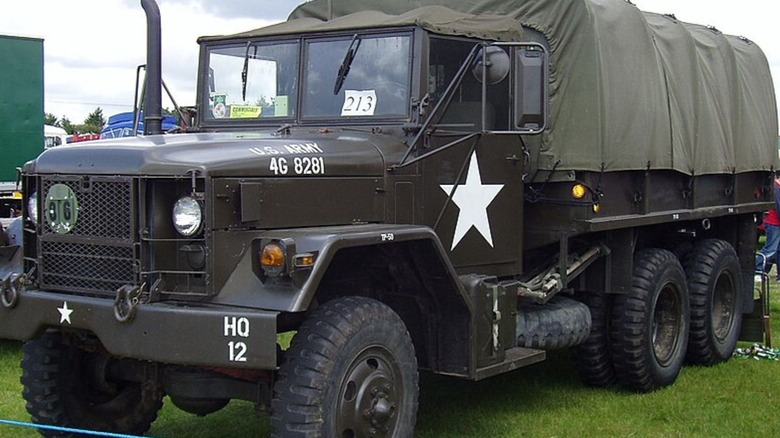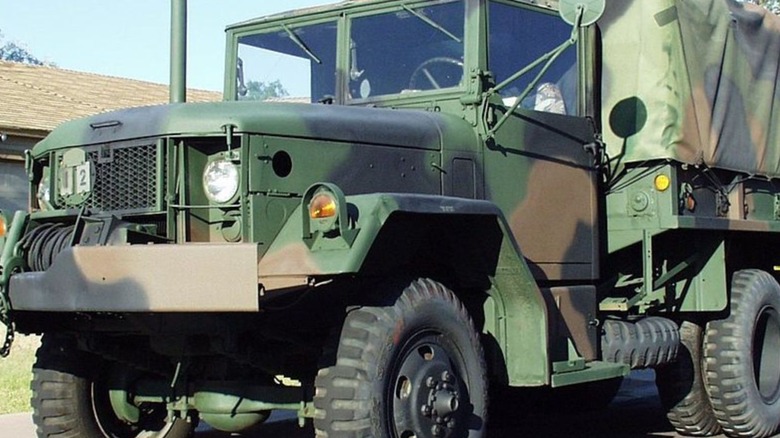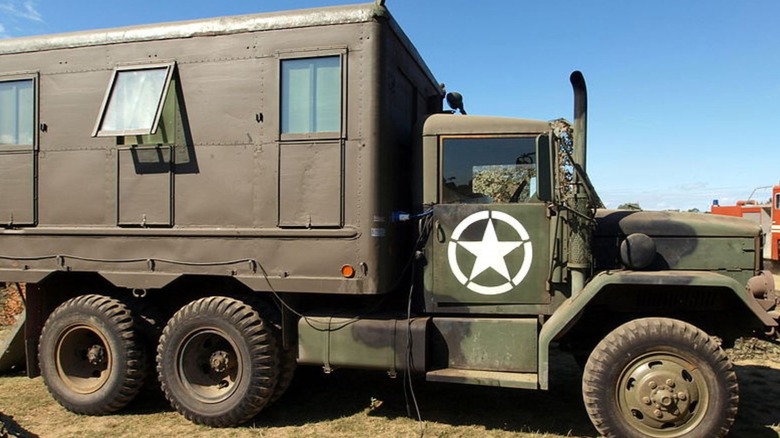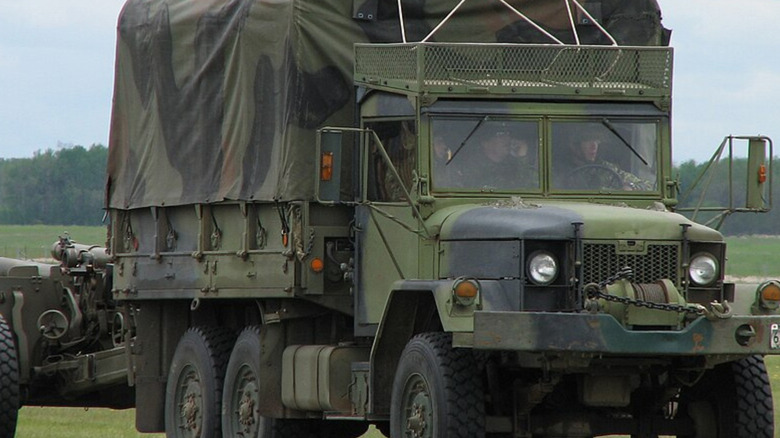What Is A 'Deuce And A Half' Military Truck, And How Did It Get Its Name?
Ask any old-school soldier about the "deuce-and-a-half," and you'll likely get a smile before the explanation. These military trucks were not glamorous, not even fast, and remained far from the spotlight that tanks and fighter jets get. But without them, many wartime missions simply wouldn't have happened. The deuce-and-a-half turned out to be the busy bee of the U.S. military, and it earned its place in history the hard way. Whether it was hauling gear, moving troops, or carrying medical equipment through some of the toughest terrain on Earth, these military trucks were the ones you could always count on.
The name "deuce-and-a-half" might sound strange, but it's actually pretty straightforward. "Deuce-and-a-half" refers to the truck's 2.5-ton payload rating. That means it could carry two and a half tons of cargo, not including its own weight. This nickname was mostly used by the soldiers who depended on it every day. So you can say it was a casual term, but it just stuck with the truck.
Built to haul and last long
The original version of this truck was named GMC CCKW, and it was designed and built during World War II (as were several strange vehicles). This old-fashioned truck was powered by a 4.4-liter inline-six engine that pushed out around 90 horsepower. By today's standards, that sounds low, but back then, it was more than enough to handle the truck's job. The main job of a deuce-and-a-half wasn't to impress with speed and design, but to haul anything, anywhere, in any condition.
And these trucks never failed anyone's expectations. Even after seeing the narrow mountain roads in Korea and the tough terrains in Vietnam, the deuce-and-a-half simply kept moving. The source of their power was the 6x6 drivetrain, meaning all six wheels could pull the truck forward, which made it ideal for tough off-road terrain. Then came the steel frame and basic mechanics into the picture, meaning it could take a beating and still be repaired in the field.
Surprisingly, over 570,000 of these trucks were built during WWII alone. They were a major part of the Red Ball Express, a convoy system that kept Allied forces supplied after the Normandy landings. If there was food, fuel, or ammo being delivered to the front, chances are it was riding in a Deuce.
Turning out to be more than just a cargo truck
Even after World War II, the military didn't abandon the idea of building these military trucks. Instead, they brought in some major improvements, and the M35 series was the result of these changes. These newer models had a better engine, including a unique multi-fuel setup that could run on just about anything: diesel, kerosene, or even jet fuel in the case of emergencies. This feature made the deuce-and-a-half military trucks incredibly versatile in remote areas where the fuel was scarce, or the variety was limited.
Even more impressive was how many different versions of the truck existed. While some of them carried troops with benches in the back, others hauled water tanks, fuel drums, mobile workshops, and a few even became mobile command centers. The M35's versatility was a direct result of continuous improvements over its predecessor, the GMC CCKW, which had already proven its worth during World War II. This adaptability ensured that, whatever the mission called for, there was probably a deuce variation ready for it.
The legacy of deuce-and-a-half still goes on
You can't witness a deuce-and-a-half on the front lines anymore, at least not officially. That said, the legacy it created decades ago isn't going anywhere soon. While the U.S. military isn't using them anymore, they are still operational for military operations in more than 20 different countries around the world. Besides the military, the off-roaders and preppers have also taken a liking to the M35 series, given its simplicity and toughness.
These military trucks did not look fancy, and definitely didn't have the polish of modern military vehicles. They were not fast and featured the most basic design one can think of, but they were reliable. Ask anyone who relied on it, and they'll tell you, when things got rough, this was the truck you wanted nearby. The work GM started decades ago continues today, with new military vehicles still supporting troops all over the world.



